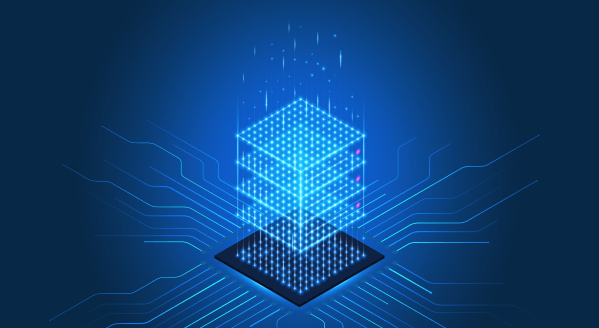- Sponsored
- Modernization
Dynamic information sharing depends on deploying the right automation

Rob Smallwood is vice president for digital modernization and enterprise IT at General Dynamics Information Technology.

Rob Smallwood, VP, Digital Modernization and Enterprise IT, GDIT
It’s hard to argue against the urgent need for modernizing federal IT systems. What’s often lost in the discussion, however, are the practical considerations of modernizing, given the sheer complexity inherent in managing so many legacy applications across today’s on-premises and cloud environments.
Add to that having to maintain the government’s stringent security requirements; the need to work within multiple security domains; and the challenges of ensuring that data can be accessed safely and at scale anywhere in the world.
That’s why it’s essential for agencies to take a closer look at the power of integrating and automating a combination of state-of-the-art technologies, to handle the astronomical cross-domain workloads that our nation depends on now and in the future. Automating classified cross-domain IT on common infrastructures, for example, would better enable the U.S. to collaborate across security domains, and with our foreign mission partners at previously unrealized scale and efficiency.
That said, the actual work of implementing automation across today’s patch-worked IT systems remains anything but automatic — especially in government and defense circles.
The reasons are as varied as they are familiar. Government policies, acquisition regulations and security demands — on top of an endless sprawl of siloed systems — have buried government IT engineering and maintenance teams under layers upon layers of complexity. As a result, implementing IT automation effectively and securely remains immensely complicated, requiring enormous technical skill and experience to integrate solutions across a wide range of commercial and customized platforms.
Those challenges are increasing as on-premises and cloud-based systems not only become more interconnected, but also more dynamically driven.
Take the Department of Defense, for example, which has committed to establishing a Joint All-Domain Command and Control (JADC2) platform, aimed at gathering and analyzing data from across all domains (sea, air, land, cyber and space) and distributing that information back to those who need it, where and when they need it.
One of the distinct challenges in that endeavor revolves around automating IT services capable of sharing information with our coalition and mission partners. Dynamically provisioning secure and classified IT capabilities across so many security boundaries — and ensuring those capabilities are executed reliably at the “speed of need” — requires mapping out a vast array of digital checkpoints before automating.
Compounding matters are government acquisition rules that historically slow down modernization efforts to a pace some some would describe as the “speed of the policy.” As a consequence, it remains difficult for agencies and their contractors to take advantage of emerging technologies — and the tools to integrate them. The reality is, the rigidity of contract regulations tend to leave little room to anticipate new technology developments coming onto the market, or an avenue to fold them into an existing program.
A better approach
So how can we set up better scenarios so that more and more IT workloads and provisions can be automated within the confines of a single contract?
One way is to transfer the risk of responsibility and the implementation of modernized IT capabilities more fully onto the backs of qualified contractors, using outcome-focused managed IT services model with fixed-priced contracts, much like today’s cloud computing models.
That helps agencies avoid the inevitable traps of cost-plus contracts, which, because of their long runways, routinely lead to technology build-outs that are already out of date by the time they’re turned on— and tend to cost more than expected. Properly structured contracts effectively alleviate the need for agencies to commit to technologies that inevitably become outmoded.
Transferring the burden of risk and liability to experienced contractors it not only incentivizes contractors to innovate more rapidly; it also facilitates automating IT services — and the benefits that automation brings — more quickly.
Those benefits can be immense. Secure automation helps to provision, operate, and sustain critical IT services automatically and dynamically. That in turn speeds up the ability to process, store, analyze and share information that drive and support enterprise missions.
Given the sprawling complexity of government IT systems, the security and regulatory rules that govern them, and the risks inherent in modernizing them, it makes increasing economic sense to partner with contractors deeply familiar with those rules and risks. But agencies should also look for partners with proven experience in assessing the larger, enterprise-wide operating picture across all silos and seams.
That means, for instance, choosing contractors capable of grasping the most complicated operational scenario that an agency might face, and then solve backwards from there. As importantly, you want partners who know how to transition legacy infrastructures and have the ability to field new capabilities and services at the same time.
One of the most extreme scenarios GDIT has tackled, for instance, is how to automate managed services for sharing information of different military classification levels with coalition partners. The task involved not only automating the nation’s most stringent security requirements, but also doing so across some of the most diverse IT environments that exist around the world.
Agencies also need to consider contractors familiar with delivering services on a global scale — while also adapting them to specialized environments. GDIT, for instance, has delivered large swaths of enterprise IT services on defense programs, ranging from the U.S. Battlefield Information Collection and Exploitation System Extended (US BICES-X) to milCloud 2.0, which connects competitively priced, highly secure cloud service offerings to DoD networks. MilCloud 2.0 provides turnkey, high-performance cloud solutions that enable DoD agencies and partners to manage big workloads across different security classifications in ways that commercial providers can’t match.
President Biden recently stated, “America’s alliances are our greatest asset.” Our ability to connect to them in cyberspace continues to be critical to that alliance. Connecting these governments together in a more automated fashion will remains an ongoing and essential task. Choosing an experienced partner who knows what that looks like, and has the necessary talent and skills, is a key step to getting to the speed of need.
Learn more how GDIT is helping defense and civilian agencies capitalize on the power of IT automation.

This story was featured in FedScoop Special Report: Automating Government Services - A FedScoop Special Report






